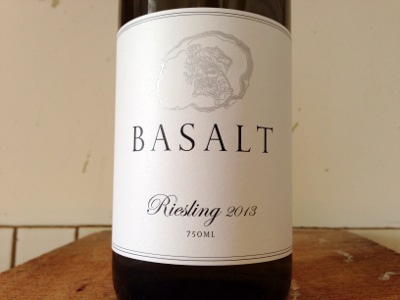If seismologists listen to the earth then geochemists taste it.
Like experts blind-tasting a glass of wine and recognising where it came from, geochemists studying the deep earth aim to find out where a particular liquid came from. Their liquid – basaltic magma formed from melting of the mantle rocks – is now solid, so ‘tasting it’ involves dissolving it in Hydrofluoric acid or vapourising it in the bowels of a machine with an unlovely name.
A wine buff can sniff out where a wine came from because they’ve already sampled lots of known vintages. Geochemists have a much harder job – basalt samples don’t have labels. They are formed from melting of the rocks below, but was the material that melted from the deep earth or shallow? Is it from oceanic crust that’s been subducted and remelted or material that’s sat around since the earth was formed?
Mantle geochemists still have more questions than answers, but that’s because what they do is really hard. They are like first-time wine-tasters who’ve been given anonymous bottles and only a fuzzy satellite image of France to work with.

Image stolen from the Basalt winery. I’m sure they won’t mind.
What to sample?
Most basalt is produced at mid-ocean ridges, where oceanic plates move apart and the underlying shallow mantle rises up, decompresses and melts. Known as MORB1 this is plonk. Widely produced, homogenised and of little interest to the true connoisseur.
Basalt from oceanic islands (OIB) is mantle geochemists’ favourite tipple. Found only in select areas far from plate boundaries it has many flavours but can be distinguished from MORB by a trained nose. Thought to be formed by material rising up in hot plumes from the deep mantle it carries whiffs of what is lurking down there.
Of particular interest at the moment are dark intense picritic lavas. Formed under higher temperatures in smaller batches they tell us more about what happens when a mantle plume first nears the surface.
Tasting
The process of producing basalt from the mantle is complex, depending on the composition and mineralogy of the melting material plus the depth and pressure. Also a lot may happen to the magma before it cools as the surface as lava. Iceland has rhyolite lava flows – very different in composition to basalt, but ultimately formed from mantle melt2.
So to study the mantle that was melted tasting the basic chemistry of the lava is not enough as changes due to later processing can obscure the smell of the source material. More sensitive mechanical noses are required, that can sniff trace elements or isotopes that may be unchanged by later processing and hold the tang of the source mantle.
Terroir
Mantle composition, as inferred from basaltic melt, is very variable, leading to the identification of a ‘zoo’ of acronyms, from DMM and HIMU (sources for MORB) to EM and FOZO (for OIB).
A key concept is ‘enrichment’. Particular elements are ‘incompatible’ which means that if they are in a rock that melts, they are strongly partitioned into the melt. As the ‘enriched’ melt moves away you are left with a ‘depleted’ residue. Continental crust is extremely enriched, oceanic crust less so.
For this reason the churned up mantle contains portions which are depleted by having had oceanic crust melted from it (DMM) and other enriched portions which contain recycled oceanic crust (HIMU). Small amounts of continental crust may enter the mantle – perhaps the mantle frozen to the base of continents may fall off. Also continental material (sediment, stones frozen into icebergs, the Titanic) may end up on ocean floor destined to be subducted. EM and FOZO are sources that may have been enriched in this way.
Primitivo
Geochemists don’t just worry about the mantle, but the whole earth. Chondritic meteorites have long been thought to be a model of the bulk chemistry of the earth. Strip out iron and other elements into the core, account for the enriched crust and you can calculate the bulk composition of the mantle.3.
Compare known mantle compositions with the theoretical bulk composition and you get a gap, leading to the idea of a hidden reservoir of ‘primitive’ composition (e.g. closer to chondritic). Conceptually this is similar to the idea of ‘dark matter’ in physics – a thing invented to explain inconsistent pieces of evidence, but for which there is no direct evidence. Only time will tell if hidden reservoirs in the mantle will be found or go the way of the luminiferous aether.
Paradoxes and problems
The idea of hidden reservoirs was extremely popular over 20 years ago, when it seemed that subducting plates stopped at 660km depth, where a ‘phase change’ in minerals alters the stiffness of the flowing mantle. This suggested that the lower mantle could be of very different composition. But modern seismic imaging suggests whole-mantle convection is possible, suggesting that over billions of years the mantle will have been thoroughly stirred – with the exception of a mysterious layer at the base of the mantle.
Mantle geochemists often talk of ‘paradoxes’ – patterns of ratios between elements and isotopes that aren’t consistent. There is a lead paradox, and an Argon one, plus a ‘heat-Helium imbalance’. Explaining these in terms of a primitive reservoir is one way, but others are possible. Let’s look at Helium.
Helium comes in two flavours. The first 3He is just two protons and a neutron and from the earth’s point of view it’s primoridal, it’s always been there and never changes. In contrast, when the great hulking nuclei of Thorium and Uranium fall apart they leave small fragments – making 4He in the alchemical process of radioactive decay.
The ratio of the two Helium isotopes is fairly consistent for MORB sources, but wildly variable for OIB. Material with a high ratio has been interpreted in terms of a primitive reservoir, rich in primoridal 3He. An alternative explanation is that the source is extremely low in 4He due to it being depleted in Uranium/Thorium. Or maybe the 3He bubbled up from the core.
Tasting the earth does not give you all the answers, but it is vital part of the picture. As I continue my tour of the deep earth, geochemistry will often have an important role to play. The difference between OIB and MORB is a powerful argument in the armoury of those who favour mantle plumes and as seismologists start to see odd things at the base of the mantle, getting a whiff of the chemistry here becomes very important.
Tasting ‘black cherries’, ‘tar’ or ‘cat-pee’ in wine is a clever trick. Tasting blobs of 4.5 billion year-old rock or recycled oceanic crust in basalt is even cleverer. Cheers!
Further reading
This is a good overview, if a little old.


